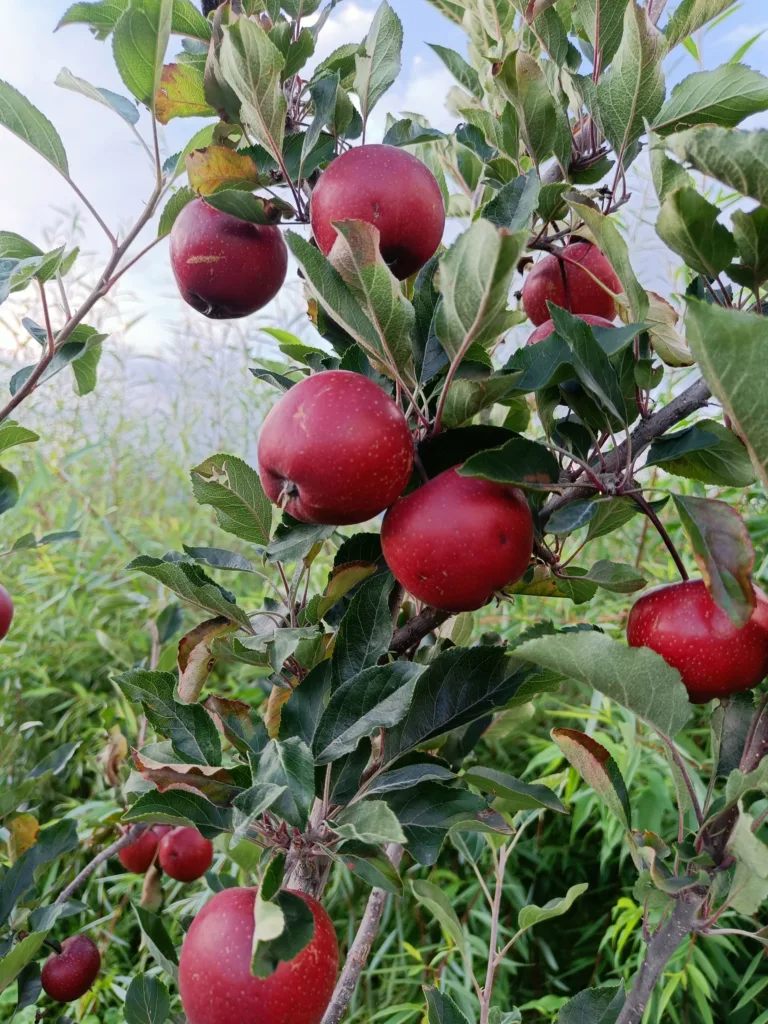From Ancient Wonders to Modern Miracles: Unveiling the Untold Story of Almonds’ Remarkable History and Life-Changing Health Benefits!
History of Almonds: From Ancient Origins to Modern Delicacies
Almonds, with their delicate flavor and versatile uses, have a rich history that spans millennia. These small, teardrop-shaped nuts have played a significant role in various cultures and cuisines around the world. In this article, we will explore the fascinating history of almonds, from their ancient origins to their modern-day prominence.
Ancient Beginnings
Almonds (Prunus dulcis) are one of the oldest cultivated nuts in the world, with a history that dates back thousands of years. The almond tree is native to the Middle East, particularly regions in present-day Iran and Iraq. Archaeological evidence suggests that almonds were consumed by early human populations as far back as 2,000 BCE.

One of the earliest references to almonds can be found in the Bible, specifically in the Book of Genesis, where it is mentioned as a prized gift. Almonds are also referenced in ancient Egyptian texts, indicating their significance in the diets of ancient civilizations.
Almonds in Greek and Roman Times
The popularity of almonds continued to grow in ancient Greece and Rome. Greek philosophers, including Theophrastus, wrote about almond cultivation and the many uses of almonds in their writings. Almonds were not only consumed as a nutritious food source but also used in various medicinal and cosmetic applications.
The Romans further propagated almond cultivation throughout their vast empire, and they referred to almonds as “Greek nuts” because of their association with Greek culture. Almond trees were planted in regions such as Spain and southern Italy, helping to spread the cultivation of almonds throughout Europe.
Medieval Europe and Beyond
During the medieval period in Europe, almonds gained prominence as a staple food. Almond milk, made by crushing almonds and mixing them with water, was a popular alternative to dairy milk, especially during times of fasting. Almonds were also used to make marzipan, a sweet and almond-based confection that became a symbol of celebration and special occasions.

As European explorers set out on their voyages in the 15th and 16th centuries, they introduced almonds to new parts of the world, including the Americas. Almond trees adapted well to the Mediterranean-like climates of California and became a thriving agricultural industry in the state.
Almonds in Modern Times
Today, almonds are one of the most popular nuts worldwide, enjoyed in a variety of forms. They are commonly consumed as a snack, added to salads, used to make almond butter, and incorporated into a wide range of baked goods and desserts. Almond milk has also seen a resurgence in popularity as a dairy-free milk alternative.
Beyond their culinary uses, almonds have gained recognition for their health benefits. They are a good source of healthy fats, protein, fiber, vitamins, and minerals. Almonds are associated with reducing the risk of heart disease, managing weight, and providing essential nutrients for overall well-being.
In recent years, almond production has boomed, with California being the largest producer of almonds globally. Almond orchards cover vast areas, making California synonymous with high-quality almonds.
Conclusion
The history of almonds is a story of ancient origins, cultural significance, and culinary versatility. From their beginnings in the Middle East to their spread throughout the world, almonds have played a vital role in human diets and cultures for millennia. Today, they continue to be celebrated for their delicious flavor, nutritional value, and diverse culinary applications, making them a beloved and enduring part of our global food heritage. Whether enjoyed as a simple snack or incorporated into complex dishes, almonds are a testament to the enduring appeal of nature’s bounty.
what is family of Almond?
The almond (Prunus dulcis), also known as the sweet almond, belongs to the family Rosaceae. This family, often referred to as the rose family, is a large family of flowering plants that includes a wide range of species, many of which are economically and culturally important.
In the case of almonds, they are part of the subfamily Amygdaloideae within the Rosaceae family. This subfamily includes other fruit-bearing trees and shrubs such as peach (Prunus persica), apricot (Prunus armeniaca), cherry (Prunus avium and Prunus cerasus), and plum (Prunus domestica).
Almonds are specifically categorized within the genus Prunus, which encompasses a variety of fruit-bearing trees and shrubs. Within the genus Prunus, there are different species, and Prunus dulcis refers specifically to the sweet almond. There is also a closely related species known as Prunus amygdalus var. amara, which produces bitter almonds. Bitter almonds contain a compound called amygdalin, which can be toxic if consumed in large quantities and requires special processing to remove the bitterness and potential toxins.
So, in summary, almonds belong to the Rosaceae family, subfamily Amygdaloideae, and are classified under the genus Prunus as Prunus dulcis (sweet almond) or Prunus amygdalus var. amara (bitter almond).
The Scientific Name and Family?
The scientific family of almonds is Rosaceae. The scientific name of the almond is Prunus dulcis.
What are the medical benefits of almonds?
Almonds offer a wide range of health benefits due to their nutrient-rich composition. Here are some of the notable medical benefits of almonds
- Heart Health:
- Almonds are rich in monounsaturated fats, which are heart-healthy fats that can help reduce bad cholesterol levels.
- They are a good source of antioxidants, including vitamin E, which can help reduce oxidative stress and inflammation in the arteries.
- Regular consumption of almonds has been associated with a reduced risk of heart disease.
- Weight Management:
- Despite being calorie-dense, almonds can aid in weight management when consumed in moderation.
- The combination of healthy fats, protein, and fiber in almonds helps promote satiety and reduces overall calorie intake.
- Blood Sugar Control:
- Almonds have a low glycemic index, which means they have a minimal impact on blood sugar levels.
- The fiber, healthy fats, and protein in almonds can help stabilize blood sugar levels and reduce the risk of type 2 diabetes.
- Bone Health:
- Almonds are a good source of calcium and magnesium, essential minerals for maintaining strong and healthy bones.
- These minerals contribute to preventing osteoporosis and promoting overall bone health.
- Digestive Health:
- The dietary fiber in almonds supports digestive regularity and can help prevent constipation.
- Almonds also contain prebiotic properties that promote the growth of beneficial gut bacteria.
- Skin Health:
- The vitamin E content in almonds contributes to healthy skin by protecting it from UV damage and reducing signs of aging.
- Almond oil is used in skincare products for its moisturizing and nourishing properties.
- Brain Health:
- Almonds are a source of nutrients like riboflavin and L-carnitine, which are important for brain health and cognitive function.
- The healthy fats in almonds may also support overall brain function.
- Reduced Inflammation:
- Almonds contain phytochemicals and antioxidants that can help reduce inflammation in the body, which is associated with various chronic diseases.
- Blood Pressure Management:
- The potassium content in almonds helps regulate blood pressure by counteracting the effects of sodium.
- Cancer Prevention:
- Some studies suggest that almonds and almond skins may have cancer-fighting properties due to their antioxidant compounds.
It’s important to note that while almonds offer numerous health benefits, portion control is key, as they are calorie-dense. A small handful (about 1 ounce or 28 grams) of almonds per day is a recommended serving size to reap their health advantages without excessive calorie intake. Including a variety of nuts and seeds in your diet can provide a broader range of nutrients and health benefits. Always consult with a healthcare professional or registered dietitian for personalized dietary recommendations.
Two Types of Almond
1.Sour Almond :
Bitter almonds (Prunus amygdalus var. amara) are a variety of almonds that differ significantly from sweet almonds (Prunus dulcis) in terms of taste, composition, and usage. Bitter almonds contain a compound called amygdalin, which can release cyanide when ingested. As a result, they are not typically consumed in their natural state. However, bitter almonds are used in certain ways for specific purposes, and here are some of their potential benefits and uses:
- Almond Oil Production: Bitter almonds are primarily used to produce almond oil. The oil extracted from bitter almonds is used in various culinary applications, such as flavoring, and in the cosmetic industry for skincare products.
- Flavoring and Almond Extract: Bitter almond extract is used sparingly as a flavoring agent in culinary preparations. It provides a distinctive almond flavor that is not easily replicated by sweet almonds.
- Traditional Medicine: Bitter almond oil and extracts have been used in traditional medicine for their potential health benefits. However, their use in this context is controversial due to the presence of cyanogenic compounds like amygdalin, which can be toxic if consumed in large quantities.
It’s essential to exercise caution when dealing with bitter almonds due to their cyanide content. To make them safe for consumption and use, they typically undergo special processing methods to remove or reduce the cyanide levels. Commercially available almond extracts and oils are often carefully processed to make them safe for culinary and cosmetic purposes.
In summary, while bitter almonds have certain applications, they must be handled with care, and their use should adhere to established safety guidelines to mitigate any potential health risks associated with their cyanide content. If you are considering using bitter almonds or products derived from them, it is advisable to choose commercially processed and regulated products to ensure safety. Always consult with experts or professionals in the culinary or cosmetic fields for guidance on their safe and appropriate usage.
2.Sweet Almond:
Sweet almonds, nature’s wholesome gems, offer a wide array of health benefits thanks to their rich nutritional profile. Here’s a closer look at the goodness packed into these unassuming nuts:
Sweet almonds are loaded with monounsaturated fats, which are known to support heart health. These fats help reduce levels of LDL (bad) cholesterol, lowering the risk of cardiovascular disease. Additionally, almonds are rich in antioxidants, such as vitamin E, which further protect the heart by reducing oxidative stress and inflammation.

Despite their calorie density, almonds can be a valuable ally in managing your weight. Their combination of healthy fats, dietary fiber, and protein promotes a sense of fullness, reducing overall calorie intake and helping with weight control.
To enjoy the health benefits of sweet almonds, incorporate them into your diet in moderation. A small handful, roughly one ounce (about 28 grams) per day, is a recommended serving size. You can enjoy almonds as a snack, add them to salads, yogurt, or use almond butter as a spread. By making sweet almonds a part of your daily routine, you can savor their delicious flavor while reaping their numerous health advantages.
How to eat almond?
Eating almonds is simple and versatile, and there are various ways to enjoy their delicious flavor and reap their health benefits. Here are some common ways to eat almonds:
Raw Almonds: Eating raw almonds as a snack is one of the most straightforward and nutritious ways to enjoy them. Simply grab a handful of raw almonds and munch on them whenever you need a quick energy boost.
Roasted Almonds: Roasting almonds can enhance their flavor. You can roast them at home by spreading them on a baking sheet and baking them in the oven at 350°F (175°C) for about 10-15 minutes until they become fragrant and lightly browned. Be sure to keep an eye on them to prevent burning.
Almond Butter: Almond butter is a creamy spread made from ground almonds. It’s a delicious and versatile option for spreading on toast, crackers, or adding to smoothies. You can also use almond butter as a dip for fruits or vegetables.
Almond Milk: Almond milk is a popular dairy-free milk alternative. It can be used in the same way as cow’s milk – in cereal, coffee, tea, and for baking and cooking. You can buy almond milk at the store, or you can make your own by blending soaked almonds with water and straining the mixture.
Almond Flour: Almond flour is made from finely ground almonds and is a gluten-free alternative to wheat flour. It’s commonly used in baking, especially for making gluten-free and low-carb recipes like almond flour pancakes or almond flour muffins.
Almond Snack Mix: Combine almonds with other nuts, dried fruits, and a touch of dark chocolate to create a healthy and satisfying trail mix. It’s a convenient and portable snack option.
Salads: Add sliced or slivered almonds to your salads for extra crunch and flavor. They complement both green salads and fruit salads.
Yogurt or Oatmeal Topping: Sprinkle chopped or sliced almonds on top of yogurt or oatmeal to add texture, flavor, and nutrition to your breakfast.
Smoothies: Blend a handful of almonds into your smoothies for a creamy texture and an added protein and fiber boost.
Baking: Almonds can be incorporated into various baked goods, such as cookies, muffins, cakes, and bread. You can use whole almonds, chopped almonds, or almond flour, depending on the recipe.
Remember that almonds are calorie-dense due to their healthy fats, so it’s best to consume them in moderation. A recommended serving size is typically about one ounce (28 grams), which is roughly a small handful or 23 almonds. This portion size allows you to enjoy the taste and health benefits of almonds without excessive calorie intake.
Can I eat almonds in empty stomach?
Yes, you can eat almonds on an empty stomach. In fact, almonds can be a healthy and nutritious choice for a morning snack or part of your breakfast routin.
The skin of almonds is Benificial?
The skin of almonds, also known as the almond skin or almond peel, contains several beneficial compounds and nutrients. While blanched almonds, which have had their skins removed, are preferred in some culinary applications for their appearance and texture, both whole almonds (with the skin) and blanched almonds (without the skin) offer nutritional benefits:
Benefits of Almond Skin (Almonds with Skin):
Fiber: The skin of almonds is rich in dietary fiber. Fiber is essential for digestive health, promoting regular bowel movements, and supporting a healthy gut microbiome.
Antioxidants: Almond skin contains antioxidants, including flavonoids and polyphenols, which help protect cells from oxidative damage and reduce inflammation.
Phytonutrients: The skin of almonds contains phytonutrients, which are naturally occurring compounds that have various health benefits, including potential anti-cancer properties.
Additional Nutrients: Almond skin also contains certain vitamins and minerals, such as vitamin E, which contributes to the overall nutrient profile of almonds.
Benefits of Blanched Almonds (Almonds without Skin)
Texture and Appearance: Blanched almonds are often preferred in recipes where the skin’s texture or appearance may not be desirable. For example, they are commonly used in baking to achieve a smoother and lighter-colored appearance in almond-based dishes.
Neutral Flavor: Blanched almonds tend to have a slightly milder and more neutral flavor compared to almonds with the skin. This can make them suitable for recipes where the almond flavor should not overpower other ingredients.
Almond Flour: Blanched almonds are often used to make almond flour, a popular gluten-free flour substitute in baking and cooking.
Ultimately, whether you choose to consume almonds with or without the skin depends on your preference and the culinary application. From a nutritional perspective, both options provide health benefits. If you enjoy the taste and texture of almond skin, there’s no harm in keeping the skins on when you eat them. If you prefer the appearance or taste of blanched almonds or almond products, you can incorporate them into your diet as well.
Incorporating a variety of nuts and almond preparations into your diet can provide a broader range of nutrients and flavors, enhancing your overall culinary experience and nutritional intake.
How long should I soak almonds?
Soaking almonds is a common practice and can make them easier to digest and potentially enhance nutrient absorption. The recommended soaking time for almonds can vary depending on your preference and the intended use. Here are some general guidelines:
Overnight Soaking: Many people choose to soak almonds overnight. To do this, place the almonds in a bowl, cover them with water, and let them soak for 8 to 12 hours. This extended soaking time softens the almonds and makes them suitable for eating as a snack or adding to recipes.
Quick Soaking: If you need soaked almonds more quickly, you can use a quicker soaking method. Boil water, remove it from the heat, and then pour it over the almonds. Let the almonds soak in the hot water for about 1 to 2 hours. This method softens the almonds faster than overnight soaking.
Blanching: If you want to remove the skins from almonds (blanched almonds), you can briefly blanch them by placing them in boiling water for about 1-2 minutes. After blanching, the skins should easily slip off, and you can either consume the blanched almonds or further dry and roast them for various culinary uses.

Sprouting: If you want to sprout almonds for increased nutrient availability, the soaking time will be longer, typically 12 to 24 hours or more. Sprouting involves soaking almonds until they begin to sprout, which can take longer than regular soaking. Be sure to rinse and drain them at regular intervals during the sprouting process.
After soaking, make sure to rinse the almonds thoroughly with clean water to remove any residual phytic acid, which can inhibit nutrient absorption. Once soaked and rinsed, you can eat the almonds as a snack, add them to recipes, or use them to make almond milk or almond butter.
Remember that soaking almonds is not necessary for everyone, and some people may prefer the taste and texture of unsprouted or unsoaked almonds. It’s a matter of personal preference, and you can choose the method that aligns with your dietary and culinary needs. Additionally, if you have dietary restrictions or specific health concerns, it’s a good idea to consult with a healthcare professional or registered dietitian for personalized advice.
“Are almonds good for the brain, and do they improve memory?”
Almonds are indeed considered a brain-boosting food due to their nutrient composition, which includes various elements that can support cognitive function and overall brain health. While almonds alone may not dramatically increase memory or intelligence, they can be a beneficial part of a brain-healthy diet. Here’s how almonds can positively impact brain health:
Omega-3 Fatty Acids: Almonds contain small amounts of omega-3 fatty acids, particularly alpha-linolenic acid (ALA). Omega-3s are essential for brain function and have been associated with improved cognitive performance.
Vitamin E: Almonds are a rich source of vitamin E, a potent antioxidant that helps protect brain cells from oxidative damage. Some studies have suggested that vitamin E may slow cognitive decline as people age.
B Vitamins: Almonds contain several B vitamins, including riboflavin (vitamin B2) and niacin (vitamin B3), which are important for overall brain health and energy production.
Magnesium: Magnesium in almonds supports nerve function and can have a calming effect on the brain. It plays a role in reducing anxiety and promoting relaxation.
Protein and Amino Acids: Almonds provide protein, which is essential for neurotransmitter production. Neurotransmitters are the chemicals that transmit signals between nerve cells in the brain.
Antioxidants: Almonds are a source of antioxidants, including phenolic compounds. These antioxidants help protect brain cells from oxidative stress and inflammation.
While almonds can contribute to overall brain health, it’s important to note that improving memory and cognitive function is a complex process influenced by various factors, including genetics, lifestyle, and overall diet. A well-balanced diet that includes a variety of nutrient-rich foods, regular physical activity, adequate sleep, and mental stimulation is crucial for maintaining cognitive function and memory.
Incorporating almonds into your diet as part of a balanced and diverse intake of nutrients can be a positive step toward supporting brain health. However, for specific concerns about memory or cognitive function, it’s advisable to consult with a healthcare professional who can provide personalized recommendations and guidance. Additionally, a holistic approach to brain health, including staying mentally active, managing stress, and maintaining a healthy lifestyle, is essential for optimizing cognitive function as you age.

Are almonds hard to digest?
Almonds, like many nuts, can be harder to digest for some individuals, primarily due to their natural enzyme inhibitors and phytic acid content. Almonds, like other nuts and seeds, contain enzyme inhibitors that can interfere with the digestion of their proteins and fats. These inhibitors are nature’s way of protecting the nut until it’s ready to germinate. For some people, consuming raw almonds may lead to digestive discomfort.
Phytic Acid: Almonds also contain phytic acid, an antinutrient that can bind to minerals like calcium, magnesium, and zinc, potentially reducing their absorption in the digestive tract. This can affect overall nutrient bioavailability.
what are side effects of almond ?
Almonds are generally safe to eat and offer numerous health benefits when consumed in moderation. However, like many foods, some people may experience side effects or adverse reactions, especially if they have allergies or consume excessive amounts. Here are potential side effects and considerations related to almonds:
Allergic Reactions: Almond allergies are relatively common. Symptoms of almond allergies can range from mild to severe and may include itching, swelling, hives, difficulty breathing, and anaphylaxis (a severe and potentially life-threatening reaction). Individuals with nut allergies should avoid almonds and almond-containing products.
Gastrointestinal Distress: Eating large quantities of almonds, particularly when not soaked or roasted, may lead to digestive discomfort in some people. This can include symptoms such as gas, bloating, or diarrhea.
Oxalates: Almonds contain oxalates, compounds that can contribute to the formation of kidney stones in susceptible individuals. People with a history of kidney stones may need to limit their oxalate intake, which includes almonds, as advised by their healthcare provider.
High Calorie Content: Almonds are calorie-dense due to their healthy fat content. Overconsumption of almonds, especially without portion control, can contribute to excessive calorie intake and potentially lead to weight gain if not balanced with other dietary choices.
Phytic Acid: Almonds, like other nuts and seeds, contain phytic acid, an antinutrient that can interfere with the absorption of certain minerals like calcium, magnesium, and zinc. However, this effect is generally not significant when almonds are consumed as part of a balanced diet.
Bitter Almonds: Bitter almonds, a different variety from sweet almonds, contain amygdalin, a compound that can release cyanide when ingested. Bitter almonds should not be consumed in their natural state. They require special processing to remove the bitterness and potential toxins.
It’s important to emphasize that for most people, almonds are a healthy and nutritious food choice that can be enjoyed as part of a balanced diet. Any potential side effects are typically associated with excessive consumption or allergies. If you have concerns about almonds or experience adverse reactions, it’s advisable to consult with a healthcare professional or allergist for guidance and testing, especially if you suspect an almond allergy or have a history of allergies.
To know More About Almond Please click here
You may like :






